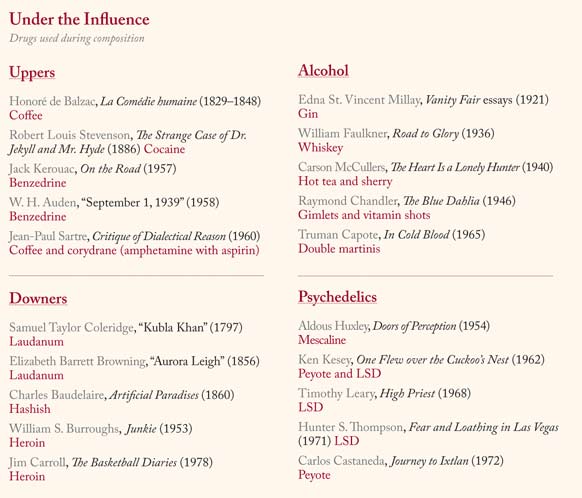drugs

Q. Is anesthesia like a coma?
A. It’s a reversible drug-induced coma, to simplify. As with a coma that’s the result of a brain injury, the patient is unconscious, insensitive to pain, cannot move or remember. However, with anesthesia, once the drugs wear off, the coma wears off.
{ Interview with Dr. Emery Neal Brown, professor of anesthesiology at Harvard Medical School | NY Times | Continue reading }
quote { Eulogy for Things Left Unsaid | video }
drugs, science | March 11th, 2011 5:40 pm

A shortage of a drug used in executions in the United States has sent U.S. states scrambling to find supplies, or alternative drugs. Among the 35 states in which capital punishment is legal, some–including Arizona and California–had been sourcing a key execution drug, sodium thiopental, through a company in London–until UK government officials put a stop to its export. The only U.S. company making the drug, which sought to move its manufacturing base to Italy, has now given up producing sodium thiopental because it cannot assure Italian officials that it won’t be used for executions.
{ Scientific American | Continue reading }
photo { Tierney Gearon }
drugs, economics, horror, uh oh | January 31st, 2011 1:32 pm
drugs, economics, within the world | December 13th, 2010 7:25 pm

{ The US authorities have discovered 20 tonnes of marijuana, worth tens of millions of dollars, in one of the most advanced illegal tunnels ever found. The passage is half a mile long and runs from inside a house in Mexico straight under the border with the United States and into a warehouse in San Diego. | BBC | video }
U.S., bridges and tunnels, drugs, law | December 9th, 2010 7:10 am

Did you know the Office of National Drug Control Policy has a publicly-accessible database of “street terms” for drugs? It’s like the feds’ own Urban Dictionary. But with even less accountability and oversight! (…)
Author: Doctor who writes illegal prescriptions
Boo boo bama: Marijuana
Dream gun: Opium
Gangster pills: Depressants
Oyster stew: Cocaine
Raspberry: Female who trades sex for crack or money to buy crack
Strawberry: LSD; female who trades sex for crack or money to buy crack
Toucher: User of crack who wants affection before, during, or after smoking crack
Twin towers: Heroin (after September 11)
Zoomer: Individual who sells fake crack and then flees
{ Gawker | Continue reading }
Why is a bag of weed always $10 (man)?
The nominal price rigidity you describe is remarkable and unusual. If the price of weed had increased in line with US consumer price inflation, you’d be paying $20–$25 a gramme now. So I agree, it is a puzzle.
My guess is that the illegality of the market gives a push towards the price stickiness you have encountered. Buying and selling cannabis is hazardous and there must be a benefit to a situation where nobody haggles over the price.
Still, the nominal price wouldn’t stick like that unless supply and demand were at least roughly in balance at $10 a gramme. And I confess, I am perplexed. My own research, which has been purely academic, suggests that prices vary between £20 and £250 an ounce in the UK, roughly £1 to £10 a gramme. Since the price stability you describe is not matched in other markets, could it be purely fortuitous?
{ Financial Times | Continue reading }
photo { Olivia Malone }
Linguistics, drugs, economics | December 5th, 2010 6:05 pm
Fluorescent blue lights and intravenous drug use in public toilets
This study reports on the findings of an intriguing qualitative study with intravenous drug users (IDUs) in Plymouth.
Apparently, there are now a number of public toilets that have fluorescent blue lights (FBL). The aim is to discourage IDUs from using public places to inject as the blue coloration makes it difficult to find and use veins. (…)
This paper shows that blue lights are only having, at best, a partial effect in deterring IDUs. One common theme running through this paper is that they can increase risky injecting – groin injecting or neck injecting are not affected by the need to see veins and it is harder to detect the difference between venous and arterial blood under FBL.
{ Northern Doctor | Continue reading }
drugs, health | November 24th, 2010 5:26 pm

At the forefront of early psychedelic research was a British psychiatrist by the name of Humphry Osmond (1917-2004). In 1951, Osmond moved to Canada to take the position of deputy director of psychiatry at the Weyburn Mental Hospital and, with funding from the government and the Rockefeller Foundation, established a biochemistry research program. The following year, he met another psychiatrist by the name of Abram Hoffer. (…)
The pair hit upon the idea of using LSD to treat alcoholism in 1953, at a conference in Ottawa. (…)
By 1960, they had treated some 2,000 alcoholic patients with LSD, and claimed that their results were very similar to those obtained in the first experiment. Their treatment was endorsed by Bill W., a co-founder of Alcoholics Anonymous who was given several sessions of LSD therapy himself, and Jace Colder, director of Saskatchewan’s Bureau on Alcoholism, who believed it to be the best treatment available for alcoholics.
Osmond also “turned on” Aldous Huxley to mescaline, by giving the novelist his first dose of the drug in 1953, which inspired him to write the classic book The Doors of Perception. The two eventually became friends, and Osmond consulted Huxley when trying to find a word to describe the effects of LSD. Huxley suggested phanerothyme, from the Greek words meaning “to show” and “spirit”, telling Osmond: “To make this mundane world sublime/ Take half a gram of phanerothyme.” But Osmond decided instead on the term psychedelic, from the Greek words psyche, meaning “mind”, and deloun, meaning “to manifest”, and countered Huxley’s rhyme with his own: “To fathom Hell or soar angelic/Just take a pinch of psychedelic.” The term he had coined was announced at the meeting of the New York Academy of Sciences in 1957.
LSD therapy peaked in the 1950s, during which time it was even used to treat Hollywood film stars, including luminaries such as Cary Grant.
LSD hit the streets in the early 1960s, by which time more than 1,000 scientific research papers had been published about the drug, describing promising results in some 40,000 patients. Shortly afterwards, however, the investigations of LSD as a therapeutic agent came to an end.
{ ScienceBlogs/Neurophilosophy | Continue reading }
photo { Lina Scheynius }
Linguistics, drugs, flashback, ideas, science | November 1st, 2010 7:55 pm

The kymograph was invented by Carl Ludwig in 1847.
P. van Bronswijk argues that the kymograph was the first recording device used to record and compare the influence of drug effects. Specifically, the kymograph enabled the study of the influence of drugs on a specific organ, which van Bronswijk says enabled the development of Pharmacology as an independent science in its own right.
{ History of Psychology | Continue reading }
photos { 1. Jacques André Boiffard, 1929 | 2. Paige de Ponte }
drugs, flashback, halves-pairs | November 1st, 2010 4:32 pm
drugs, haha, new york | October 1st, 2010 4:34 pm

Female Viagra is ineffective at improving sexual desire in women, so FDA doesn’t approve the medicine.
After much review and public controversy, the FDA met this week and determined that flibanserin, a new medication that was hoped to be an effective treatment for female sexual arousal disorder, did not significantly improve symptoms of the disorder, and ruled against approving the medication.
Female sexual arousal disorder, also known as hypoactive sexual desire disorder, (HSDD) is a relatively new diagnosis. It was historically known as frigidity, and more attention was given to the concept of the lack of sexual desire or arousal as a biological disorder potentially treatable with pharmaceuticals. When Sildenifil (Viagra) appeared on the market with enormous publicity and profit for the pharmaceutical industry, a lack of desire in women came under consideration as a potentially treatable disease.
HSDD is often defined by a persistent lack of desire or a lack of sexual fantasies. Women with HSDD rarely initiate sex or seek sexual satisfaction. It is thought that as many as 10 percent of American women may suffer from HSDD.
Possible causes may include stress, relationship problems, anger, or a lack of intimacy with sex partners. There are also known medical causes including side effects of certain medications including some antidepressants, blood pressure medications, and birth control pills. Menopause may also decrease sexual arousal and stimulation, as well as depression.
{ LiveScience | Continue reading }
The female-libido-boosting drug flibanserin proved marginally effective in two trials reported by the FDA on Wednesday. Still, its side effects may outweigh whatever benefits it offers: 15 percent of participants stopped taking the drug due to dizziness, nausea, anxiety, or insomnia. Why does it seem like every drug causes the same side effects?
{ Slate | Continue reading }
drugs, health, relationships, sex-oriented | June 26th, 2010 10:26 am
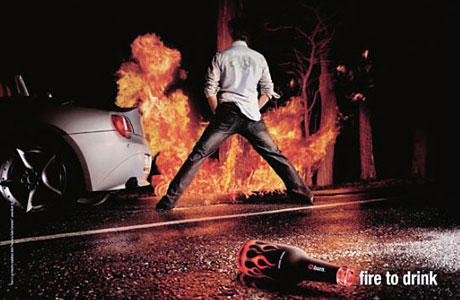
Scientists are taking a new look at hallucinogens, which became taboo among regulators after enthusiasts like Timothy Leary promoted them in the 1960s with the slogan “Turn on, tune in, drop out.” Now, using rigorous protocols and safeguards, scientists have won permission to study once again the drugs’ potential for treating mental problems and illuminating the nature of consciousness.
After taking the hallucinogen, Dr. Martin put on an eye mask and headphones, and lay on a couch listening to classical music as he contemplated the universe.
“All of a sudden, everything familiar started evaporating,” he recalled. “Imagine you fall off a boat out in the open ocean, and you turn around, and the boat is gone. And then the water’s gone. And then you’re gone.”
Today, more than a year later, Dr. Martin credits that six-hour experience with helping him overcome his depression and profoundly transforming his relationships with his daughter and friends. He ranks it among the most meaningful events of his life, which makes him a fairly typical member of a growing club of experimental subjects.
{ NY Times | Continue reading }
drugs, experience, health | May 18th, 2010 5:45 pm
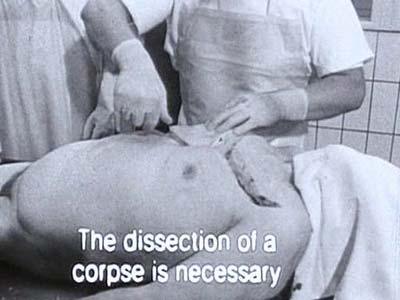
The Oswego man charged with fatally shooting his wife and their three school-age children told police he was having marital problems caused by his affair in Mexico seven months earlier and his wife’s lack of interest in adopting his Druid beliefs.
{ Chicago Breaking News | Continue reading }
A controversial alternative health guru is suing after a taste of his own medicine nearly killed him.
Gary Null - described on quackwatch.org as “one of the nation’s leading promoters of dubious treatment for serious disease” - claims the manufacturer of Gary Null’s Ultimate Power Meal overloaded the supplements with Vitamin D.
The buff “Joy of Juicing” author, whose products include Red Stuff Powder and Gary Null’s Heavenly Hair Cleaner, claims he suffered kidney damage and was left bloodied and in intense pain from two daily servings of the supplement.
{ NY Daily News | Continue reading }
A Newport Beach man attempting to steal a pornographic magazine shoved a liquor store owner so fiercely that the man flew through the air and landed on the back of his head.
The owner died the day after the vicious attack on July 28, 2007 from a fractured skull and massive bleeding in the brain.
{ The Orange County Register | Continue reading }
related { Man killed in bizarre high speed crash. }
drugs, fights, gross, horror, incidents, pipeline, weirdos | April 29th, 2010 4:57 am

A drug used as a general anaesthetic may also work as a remarkably rapid antidepressant, according to a preliminary study.
The drug’s hallucinogenic side effects mean it is unlikely to be prescribed to patients, but it could pave the way to new faster-acting antidepressants, the researchers suggest.
Ketamine is used as an animal tranquiliser, but is perhaps better known as an illicit street drug, sometimes called “special K”. Now researchers have found the drug can relieve depression in some patients within just 2 hours - and continue to do so for a week.
One problem with current antidepressants is that they typically take weeks to kick in. Some studies have found that patients may face a high risk of suicide in the first week after starting an antidepressant treatment because of this lag time. So researchers have been searching for alternative drugs.
{ NewScientist, 2006 | Continue reading }
drugs, health, science | April 28th, 2010 11:47 am
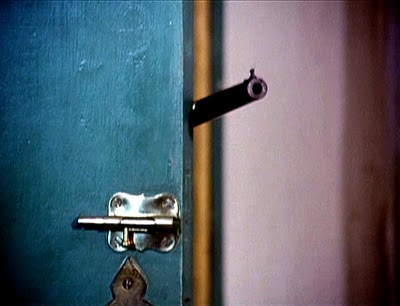
First, while the Mexican government has lost control over matters having to do with drugs and with the borderlands of the United States, Mexico City’s control over other regions — and over areas other than drug enforcement — has not collapsed (though its lack of control over drugs could well extend to other areas eventually). Second, while drugs reshape Mexican institutions dramatically, they also, paradoxically, stabilize Mexico. We need to examine these crosscurrents to understand the status of Mexico.
Let’s begin by understanding the core problem. The United States consumes vast amounts of narcotics, which, while illegal there, make their way in abundance. Narcotics derive from low-cost agricultural products that become consumable with minimal processing. With its long, shared border with the United States, Mexico has become a major grower, processor and exporter of narcotics. Because the drugs are illegal and thus outside normal market processes, their price is determined by their illegality rather than by the cost of production. This means extraordinary profits can be made by moving narcotics from the Mexican side of the border to markets on the other side.
Whoever controls the supply chain from the fields to the processing facilities and, above all, across the border, will make enormous amounts of money. Various Mexican organizations — labeled cartels, although they do not truly function as such, since real cartels involve at least a degree of cooperation among producers, not open warfare — vie for this business. These are competing businesses, each with its own competing supply chain.
Typically, competition among businesses involves lowering prices and increasing quality. This would produce small, incremental shifts in profits on the whole while dramatically reducing prices. An increased market share would compensate for lower prices. Similarly, lawsuits are the normal solution to unfair competition. But neither is the case with regard to illegal goods.
The surest way to increase smuggling profits is not through market mechanisms but by taking over competitors’ supply chains. Given the profit margins involved, persons wanting to control drug supply chains would be irrational to buy, since the lower-cost solution would be to take control of these supply chains by force. Thus, each smuggling organization has an attached paramilitary organization designed to protect its own supply chain and to seize its competitors’ supply chains.
The result is ongoing warfare between competing organizations. Given the amount of money being made in delivering their product to American cities, these paramilitary organizations are well-armed, well-led and well-motivated. Membership in such paramilitary groups offers impoverished young men extraordinary opportunities for making money, far greater than would be available to them in legitimate activities.
The raging war in Mexico derives logically from the existence of markets for narcotics in the United States; the low cost of the materials and processes required to produce these products; and the extraordinarily favorable economics of moving narcotics across the border. This warfare is concentrated on the Mexican side of the border. But from the Mexican point of view, this warfare does not fundamentally threaten Mexico’s interests.
{ George Friedman | Continue reading }
drugs, economics | April 28th, 2010 11:02 am
books, drugs, experience, leisure | April 22nd, 2010 7:00 am

Tom Bissell was an acclaimed, prize-winning young writer. Then he started playing the video game Grand Theft Auto. For three years he has been cocaine addicted, sleep deprived and barely able to write a word. Any regrets? Absolutely none.
{ Tom Bissell | full story }
installation { Stephen Johnson, Ice Cream Floats, 2005-2007 }
drugs, experience, leisure | March 23rd, 2010 2:10 pm
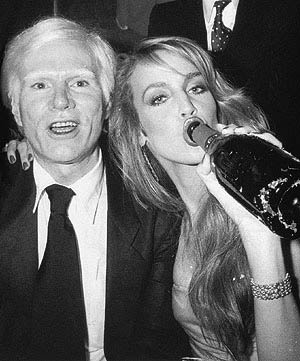
Sometimes you hear a word for the first time and think: “Of course.” How better to describe Paris Hilton than as a “celebutante” or the frequent tabloid target Alec Baldwin as “the bloviator”? (Thanks, New York Post!)
Now make room for “prehab.”
Prehab made its debut on Feb. 23, the handiwork of GlasgowRose, a commenter on Gawker, after a publicist for Charlie Sheen announced that the star of “Two and a Half Men” was entering rehab as a “preventative measure.”
{ NY Times | Continue reading }
A respected scientist set out to determine which drugs are actually the most dangerous — and discovered that the answers are, well, awkward. (…)
The list, printed as a chart with the unassuming title “Mean Harm Scores for 20 Substances,” ranked a set of common drugs, both legal and illegal, in order of their harmfulness - how addictive they were, how physically damaging, and how much they threatened society. Many drug specialists now consider it one of the most objective sources available on the actual harmfulness of different substances.
That ranking showed, with numbers, what Nutt was fired for saying out loud: Overall, alcohol is far worse than many illegal drugs. So is tobacco. Smoking pot is less harmful than drinking, and LSD is less damaging yet.
{ The Boston Globe | Continue reading }
Andy was one of my best friends. We hung out together several nights a week for over ten years. We used to go to Studio 54 — an amazing place.
{ Jerry Hall interview | Index magazine | Continue reading }
photo { Andy Warhol and Jerry Hall, Studio 54, NYC, late 70s }
Linguistics, drugs, food, drinks, restaurants, health, warhol | March 4th, 2010 12:44 pm

Doctors warned of a potentially dangerous method of cocaine abuse–injecting the drug directly into the urinary tract–a practice that led to complications costing one man his penis, nine of his fingers and parts of his legs. (…)
Perry said the man was admitted to a New York hospital for a problem with his penis, which had remained erect for three days resulting in a painful inability to urinate. (…)
On his third day in the hospital, the man’s erection suddenly went down, but blood leaked into the tissues and coagulated under the skin of his feet, hands, genitals, back and chest over the next 12 hours.
{ UPI/Cocaine.org | Continue reading | Thanks Reto! }
drugs, weirdos | February 25th, 2010 8:35 pm

Pharmaceutical companies are always on the lookout for secondary drug targets. After all, if you invest billions developing a single drug, you would be more than happy to sell it as a treatment for two, three, or more different ailments. Sildenafil citrate was developed to treat angina and hypertension. During phase I clinical trials, it was found that Sildenafil induces penile erections. The drug was branded Viagra, and the rest is history. Eflornithine, an anti-cancer drug, is also effective against the agent of African Sleeping Sickness, Trypanosoma brucei. African Sleeping Sickness belongs to a group of diseases known as “neglected diseases”, for which drug development is not profitable. However, having a drug already on hand makes it easier to market in affected areas.
Another example of polypharmacology is a drug that binds to multiple targets in the human body. This could be used for overcoming drug resistance, a known problem with cancer. Cancer tumours often develop a resistance to anti-cancer drugs because the protein that the drug bind to mutates, and no longer binds the drug. However, if the drug acts by binding redundantly to several proteins, it would be more effective, since several mutations would be required to effect drug resistance.
{ Byte Size Biology | Continue reading }
drugs, health, science | January 28th, 2010 5:24 pm
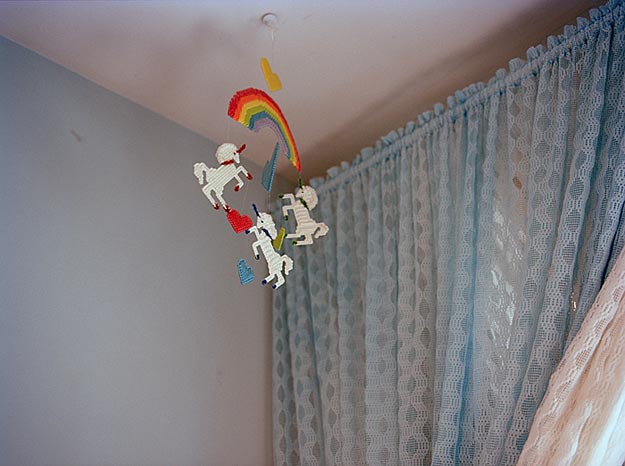
According to accepted DSM-IV diagnostic criteria, close to 50% of people suffer from a mental illness at some point; a large fraction of this being depression. 10% of Americans took antidepressants last year according to the best estimates.
Guess what? Clever people have started asking “Antidepressants are amongst the biggest selling drugs in the world - but do they work?” And their answer is - not very well.
{ Neuroskeptic | Continue reading }
related { Does semen have antidepressant properties? }
photo { Leilani Wertens }
drugs, health | January 28th, 2010 5:20 pm














